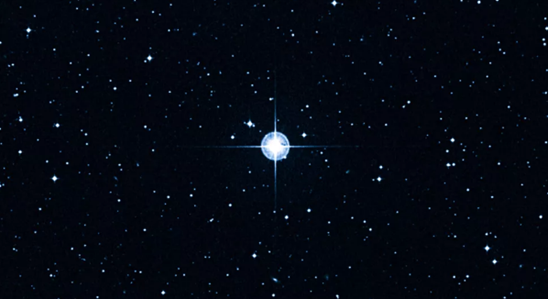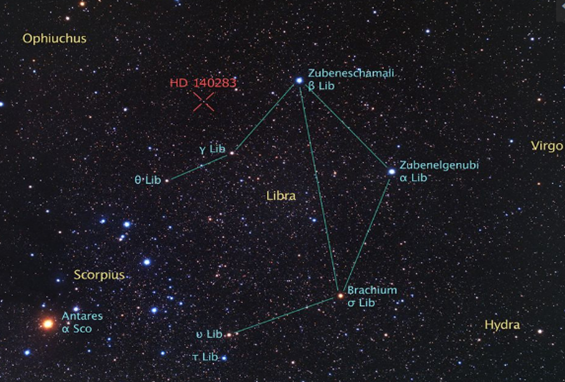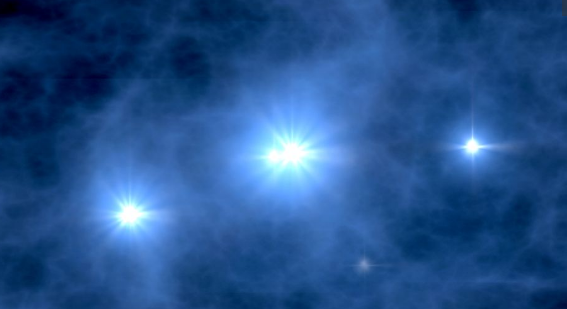by Rida Fatima

Figure 1: The oldest star in the universe is HD140283 — or Methuselah as it’s commonly known. This Digitized Sky Survey image shows Methuselah star, located 190.1 light-years away. Astronomers refined the star’s age to about 14.3 billion years (which is older than the universe), plus or minus 800 million years. Image released March 7, 2013. (Image credit: Digitized Sky Survey (DSS), STScI/AURA, Palomar/Caltech, and UKSTU/AAO)
Scientists tried to determine the age of what they believed to be the universe’s oldest star in 2000 and these observations were made with the help of the European Space Agency’s (ESA). HD140283, often known as Methuselah, was calculated by the Hipparcos satellite to be an astounding 16 billion years old. Such a number seemed somewhat perplexing. The universe is after all 13.8 billion years old, according to studies of the cosmic microwave background. Astronomers began seeking out the truth and vetting the figure’s correctness. Their findings were equally astounding (Crookes, 2022). Methuselah, named after a biblical patriarch who is claimed to have lived to the age of 969 and hence was the longest-living person in the Bible, has been the subject of astronomical observation for more than a century. Methuselah is about 190 light-years away from our planet, residing in the constellation Libra. It zips through the sky at an incredible 1.3 million kilometers per hour.
The metallically poor sub giant is primarily composed of hydrogen and helium, with very little iron which makes it obvious how old this star was (Crookes, 2022). Due to its chemical makeup, it must have formed before iron became widely distributed in the cosmos and during the helium and hydrogen era. However, is it possible that Methuselah is more than 2 billion years older than its surroundings? The cosmos was either not as “new” as scientists believed it to be, or Methuselah was older than the universe. Or maybe the dating was just completely off. What would it be?
Investigating the age of Methusela

Figure 2: This is a backyard view of the sky surrounding the ancient Methuselah star, cataloged as HD 140283. Image released March 7, 2013. (Image credit: A. Fujii and Z. Levay (STScI))
The Hubble Space Telescope had conducted observations, noting the locations, separations, and luminous output of stars. The scientists were able to establish a more accurate sense of age by the acquisition of parallax, spectroscopy, and photometry readings. The precise distance to the star was one of the unknowns associated with HD 140283’s age. It was crucial to get this right because it helps to calculate the star’s luminosity and, consequently, its age; the younger the star, the greater the intrinsic luminosity. The astronomers were looking for the parallax effect, which required them to observe the star twice, six months apart, in order to detect any change in the star’s location brought on by the Earth’s orbit, which may be used to determine the distance (Tang et al., 2021).
Astronomers also explain that the theoretical models of the stars also had uncertainties. This includes the exact rates of nuclear reactions in the core as well as the importance of elements being diffused downward in the external layers. As a result, they centered on the hypothesis that any residual helium diffuses deeper into the core, reducing the amount of hydrogen available for nuclear fusion. The age is decreased as fuel is utilized more quickly. The amount of oxygen present in the star was an additional essential component. Since oxygen was not abundant in the universe until a few million years ago, HD 140283 had an oxygen-to-iron ratio that was higher than expected, which again suggested a younger age for the star (Tang et al., 2021).
After doing all of this work, scientists determined that HD 140283 is 14.46 billion years old. Although it was far less than the previously stated age (16 billion), it was still significantly larger than the age of the universe. Within this regard, it still didn’t answer the question and, at first glance, seemed to do little more than ensure that Methuselah would remain a mystery (Lincoln, 2021). However, the scientists included an additional 800 million years of residual uncertainty. It was a significant development. The age of HD 140283 decreased slightly when more adjustments were made. In 2014, a follow-up study was done that reviewed the star’s age to 14.27 billion years. There is no conflict because 13.8 billion years falls inside the star’s error bar if one takes into account all sources of uncertainty, including those in observational measurements and theoretical models.
Additionally, in May 2021, a different team of astronomers updated the best hypotheses for the age and mass of Methuselah, and after modelling the evolution of stars, they determined that it is 12 billion years old. Even though the sun, at 4.6 billion years old, is still a baby compared to HD 140283, this nevertheless places the star’s age well within the universe’s age range. Or does it?
Why does the Universe appear younger than Methuselah

Figure 3: Artist’s impression of the formation of the universe’s first stars. (Image credit: NASA/WMAP Science Team)
There are two possibilities explaining why universe appears younger than Methuselah. According to the scientific history, both possibilities may be true in such circumstances. In this situation, such would be unresolved sources of observational inaccuracy as well as some gaps in the dynamics of the universe theory. Primarily, this includes strength of dark energy, which has been the main force behind the cosmos’ long-term expansion (Bond et al., 2013).
Time variation in dark energy can explain the current “age paradox” leading to a change in the rate of acceleration. This hypothesis has been proven to be compatible with theories regarding the basic properties of gravity i.e., causal set theory. According to Matthews, fresh gravitational wave research may assist to explain the conundrum. Cosmic microwave background or the observation of nearby objects like Cepheid variables and supernovae will not be used to measure the Hubble Constant. However, scientists would instead look at the ripples created in the fabric of space and time by pairs of dead stars (Catelan, 2017).
Since gravitational waves were only directly discovered for the first time in 2015, detecting them is a difficult process. However, astronomer Stephen Feeney of the Flatiron Institute in New York believes that a discovery might be found within the next ten years. The goal is to gather information from pairs of neutron star collisions and measure their velocity in relation to Earth by measuring the visible light these events release. It also involves measuring the distance from the gravitational waves that are produced; when combined, these two factors can yield the most precise Hubble Constant determination ever.
The age of HD 140283 is a riddle that is leading to something bigger and more sophisticated in science. It is also changing our understanding of how the universe functions. The paradox is most likely explained by some empirical phenomenon that has gone unnoticed or by a significant gap in our knowledge of the dynamics of cosmic expansion. Astronomers will continue to face challenges as they try to determine exactly what that “something” is.
Reference
- Crookes. (2022, March 7). Methuselah: The oldest star in the universe. Space.Com. https://www.space.com/how-can-a-star-be-older-than-the-universe.html
- Tang, Jianling, and Meridith Joyce. “Revised Best Estimates for the Age and Mass of the Methuselah Star HD 140283 Using MESA and Interferometry and Implications for 1D Convection.” Research Notes of the AAS 5.5 (2021): 117.
- Lincoln, Don. “Have Astronomers Found a Star Older Than the Universe?.” The Physics Teacher 59.3 (2021): 154-158.
- Bond, Howard E., et al. “HD 140283: A star in the solar neighborhood that formed shortly after the Big Bang.” The Astrophysical Journal Letters 765.1 (2013): L12.
- Catelan, M. “The ages of (the oldest) stars.” Proceedings of the International Astronomical Union 13.S334 (2017): 11-20.
